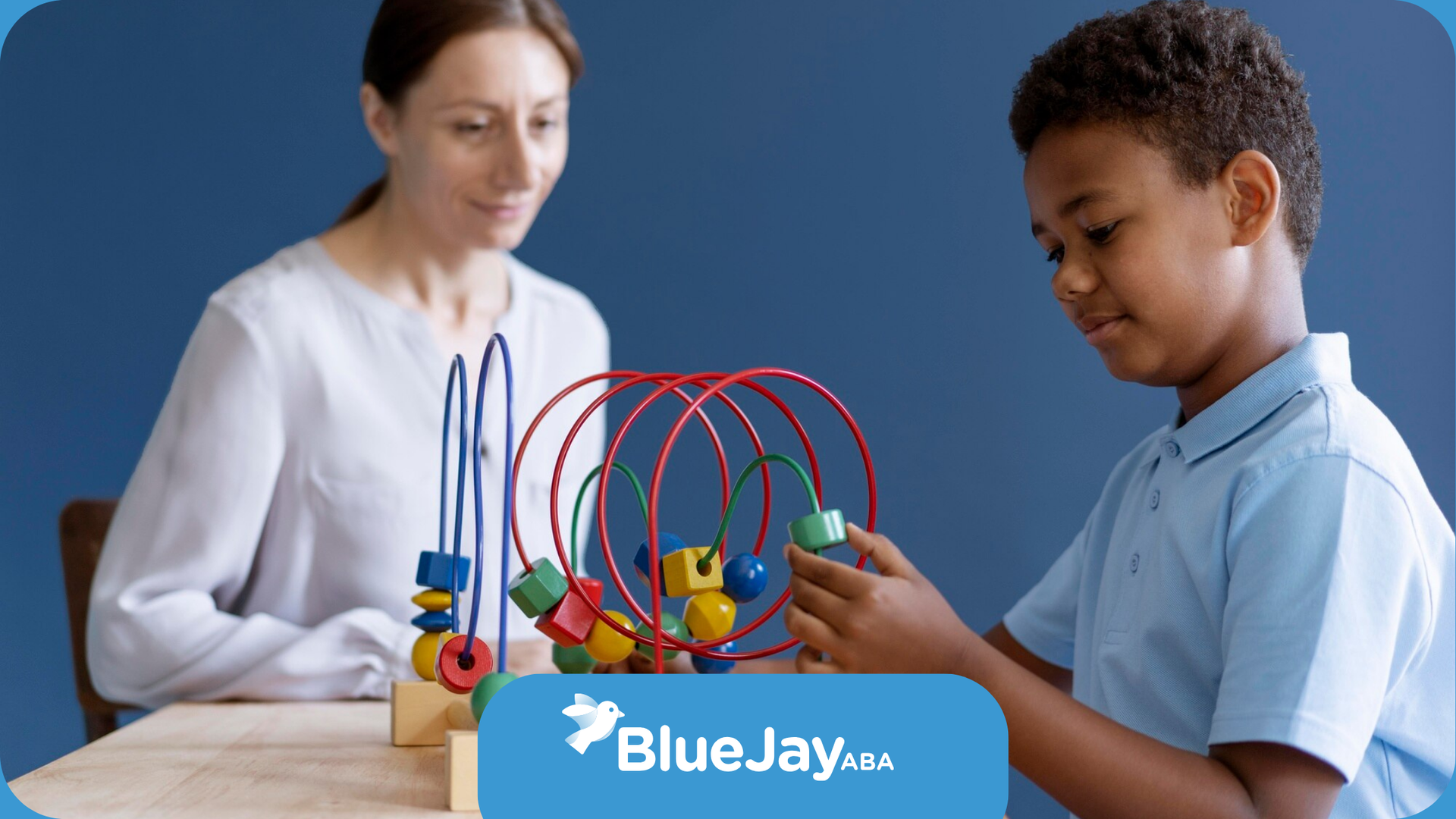Is ABA Therapy Harmful? What Parents and Professionals Need to Know
Introduction
Applied Behavior Analysis (ABA) therapy is widely recognized as one of the most effective treatments for Autism Spectrum Disorder (ASD) and other related conditions. However, despite its widespread use, some individuals express concerns about whether ABA therapy might be harmful.
In this article, we will explore these concerns, provide evidence-based insights into ABA therapy, and address the question: Is ABA therapy harmful? We will also highlight the benefits, ethical considerations, and safety of ABA therapy, particularly for parents, family members, ABA therapists, educators, and school personnel in North Carolina, Colorado, Massachusetts, Maryland, and Washington D.C.
By the end of this article, you will have a clearer understanding of ABA therapy, its risks, its benefits, and how it can support children and adults with autism.
What is ABA Therapy?
Before diving into the potential concerns surrounding ABA therapy, it’s essential to understand what ABA therapy is and how it works. Applied Behavior Analysis (ABA) is a therapeutic approach that focuses on understanding behavior and applying evidence-based techniques to promote positive changes. The goal of ABA therapy is to help individuals with autism develop essential life skills and reduce challenging behaviors.
ABA therapy involves a combination of techniques, such as positive reinforcement, to encourage desired behaviors, and strategies to teach communication, social skills, and self-care.
Why Do Some People Think ABA Therapy is Harmful?
Despite its success, ABA therapy has faced criticism over the years. Some individuals, including individuals with autism and advocacy groups, have raised concerns about the potential
harm caused by certain ABA practices.
These concerns typically center on the following issues:
1. Focus on Compliance
Some critics argue that ABA therapy may prioritize compliance over the development of autonomy, leading to the suppression of the individual’s personality and natural behaviors.
2. Use of Aversive Techniques
In the past, some forms of ABA therapy employed aversive techniques—such as punishment or aversive stimuli—to discourage undesirable behaviors. Although these practices have been largely abandoned by modern ABA methods, some critics still associate ABA therapy with negative, harmful methods.
3. Stress on Children
ABA therapy can involve intensive sessions, sometimes up to 40 hours a week, which may lead to exhaustion and stress for children, especially when therapy is too rigid or overwhelming.
4. Lack of Individualization
Critics also argue that some ABA programs fail to adequately adapt to the individual needs of children, forcing them into a “one-size-fits-all” approach that may not always be in the child’s best interest.
The Truth About ABA Therapy and Harm: Evidence-Based Insights
While the concerns about ABA therapy are valid, it’s important to consider the evolution of ABA and the current practices that are designed to address these concerns.
1. Modern ABA Therapy Focuses on Positive Reinforcement
Unlike older methods, modern ABA therapy focuses on reinforcing positive behaviors rather than punishing negative ones. Positive reinforcement is a well-researched technique that encourages individuals to engage in desired behaviors by offering rewards or incentives for accomplishments. This approach supports the individual’s autonomy and promotes learning in a positive, supportive environment.
2. Ethical ABA Therapy: Safe and Non-Aversive Practices
Ethical ABA therapy today strictly prohibits harmful techniques. Aversive practices (like physical punishment or electric shocks) have been removed from ABA protocols for decades. Reputable practitioners and programs emphasize respect, dignity, and consent in the treatment process.
The Behavior Analyst Certification Board (BACB) enforces ethical guidelines that require practitioners to use humane, evidence-based practices in all ABA interventions. This ensures that the therapy is not harmful but instead promotes a safe, supportive learning environment.
3. ABA is Tailored to Individual Needs
ABA therapy is highly individualized and flexible. Modern ABA practitioners create personalized treatment plans based on the unique needs, strengths, and goals of each individual. Whether a child is nonverbal, struggles with social skills, or needs help with daily living activities, ABA therapy can be adapted to meet their specific requirements. This approach addresses the concern that ABA is a “one-size-fits-all” solution.
Who Should Not Undergo ABA Therapy?
While ABA therapy is highly effective for many individuals, it’s important to note that not everyone will benefit from it. Some factors to consider when determining if ABA therapy is appropriate include:
• The child’s personal preferences and comfort levels with the therapy.
• The goals and desired outcomes for the individual (i.e., communication, independence, social skills).
• The availability of qualified professionals who practice ABA ethically and responsibly.
In rare cases, intense ABA therapy might not be suitable for individuals who are overwhelmed by lengthy sessions or feel uncomfortable with the structure. In such cases, alternative therapies like occupational therapy or speech therapy may be more appropriate.
Benefits of ABA Therapy: Addressing the Misconceptions
To truly understand whether ABA therapy is harmful, it’s important to balance the criticisms with the many benefits it provides:
• Improved Communication Skills: ABA helps children and adults with autism learn how to express themselves effectively, whether through verbal communication or alternative methods like sign language.
• Reduction of Challenging Behaviors: ABA helps address negative behaviors (like aggression, self-injury, or noncompliance) by replacing them with more appropriate alternatives.
• Increased Independence: ABA teaches practical skills that promote independence, such as dressing, eating, and using the bathroom.
• Enhanced Social Skills: Through ABA, individuals with autism can learn appropriate ways to interact with peers and family members, helping them form meaningful relationships.
Conclusion
ABA therapy is not harmful when practiced ethically and tailored to an individual’s needs. While concerns about ABA’s past practices are valid, modern ABA therapy emphasizes respect, positive reinforcement, and individualized treatment to promote the well-being and development of individuals with autism.
If you are considering ABA therapy for your child or student in North Carolina, Colorado, Massachusetts, Maryland, or Washington D.C., it’s important to ensure that the therapist you choose is certified, follows ethical guidelines, and is dedicated to creating a supportive and positive learning environment.
Frequently Asked Questions
Does ABA therapy hurt children with autism?
No, when ABA therapy is performed by a certified, ethical professional, it is designed to be safe and supportive. Modern ABA focuses on positive reinforcement and does not use harmful methods.
Why is ABA therapy controversial?
ABA therapy has faced criticism due to its past use of aversive techniques and its focus on compliance. However, current practices have shifted to be more ethical, focusing on individualized care, positive reinforcement, and respect for autonomy.
Can ABA therapy cause stress for children?
In some cases, intensive ABA sessions may cause stress, particularly if the therapy is not adapted to the child’s needs. It’s important to ensure that therapy is individualized and not overwhelming, and to balance therapy with breaks to reduce stress.
SOURCES:
https://my.clevelandclinic.org/health/treatments/25197-applied-behavior-analysis
https://www.medicalnewstoday.com/articles/is-aba-therapy-harmful
https://www.parents.com/positive-reinforcement-examples-8619283
https://www.bacb.com/wp-content/uploads/2022/01/Ethics-Code-for-Behavior-Analysts-240830-a.pdf
https://www.autismparentingmagazine.com/autistic-child-sign-language/
Need Assistance?
We’re Here to Help
Our expert team is ready to support your child’s development and well-being.
We are committed to offering tailored ABA therapy solutions that promote growth.
Contact us today for Professional ABA Therapy.
Related Posts
MENU
GET IN TOUCH
STAY CONNECTED
Join our newsletter and find out more
NewsletterFooter
We will get back to you as soon as possible
Please try again later








